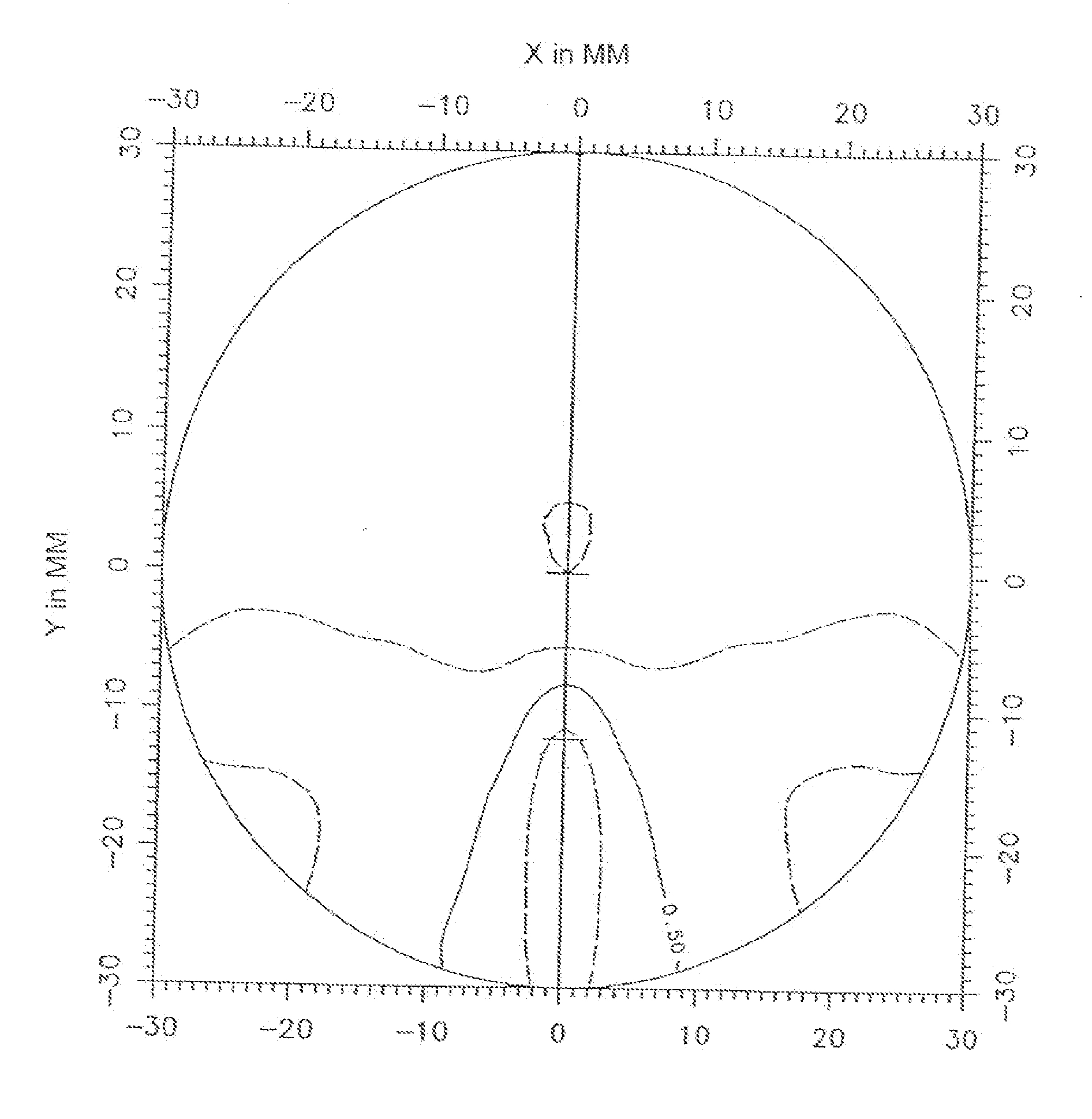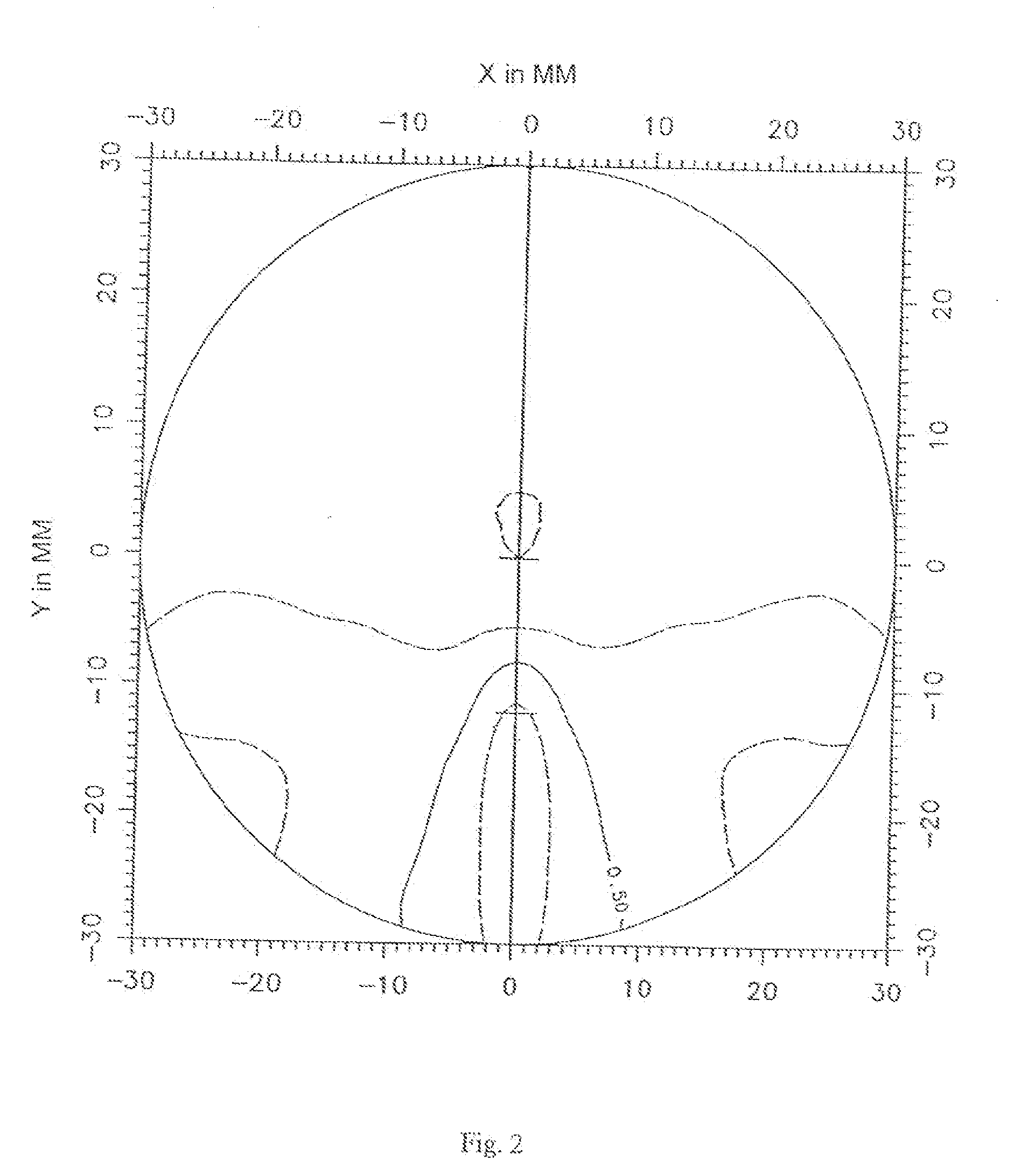Progressive Ophthalmic Lens
a technology of ophthalmology and lens, applied in the field of ophthalmology, can solve the problems of different power correction values and no far vision, and achieve the effect of convenient prescribing and easy to tolera
- Summary
- Abstract
- Description
- Claims
- Application Information
AI Technical Summary
Benefits of technology
Problems solved by technology
Method used
Image
Examples
first embodiment
[0050]FIG. 1 shows a diagram of the principal curvatures and of the sphere on the axis of a lens according to the invention. The points on the complex surface of the lens are plotted on FIG. 1—and on FIGS. 2 to 4—relative to an orthonormalized reference frame, the center of which is superposed on the optical center of the lens, the ordinates axis of which is vertical and the abscissa axis is horizontal. In other words, the axis of symmetry of the lens is the ordinates axis. In FIG. 1 the curvature or the sphere is plotted on the abscissa axis in diopters; the position on the lens is marked on the ordinates axis in millimetres. FIG. 1 also shows at the ordinate y=0 mm, the centering point of the lens; this is a point produced on the lens which is used by the optician for fitting the lens in the frame, as explained below.
[0051] The centering point of the lens, considered below, often merges with the geometrical center of the lens before trimming. More generally, the centering point ca...
second embodiment
[0076]FIGS. 9 and 10 are similar to FIGS. 4 and 5. Because of the larger value of sphere progression over the surface, cylinder gradient also reaches greater values in the second embodiment than in the first; FIG. 9 shows the 0.50 to 3.00 diopters / mm isoslopes with a pitch of 0.50 diopters / mm. In the far-vision region, defined as indicated above, cylinder slope (or cylinder gradient) is still less than or equal to 0.50 diopters / mm; this inequality is also confirmed in the upper part of the lens for ordinates greater than or equal to 8 mm, whatever the abscissa values. The cylinder gradient is less than 1 diopter / mm for the part of the lens with an ordinate greater than or equal to 5 mm. in the lower right and left parts of the lens, defined as with reference to FIG. 4, the cylinder gradient is also less than or equal to 1 diopter / mm. Finally, cylinder gradient has values less than or equal to 2 diopter / mm over the whole surface of the lens, except over the part of the lens around th...
PUM
 Login to View More
Login to View More Abstract
Description
Claims
Application Information
 Login to View More
Login to View More - R&D
- Intellectual Property
- Life Sciences
- Materials
- Tech Scout
- Unparalleled Data Quality
- Higher Quality Content
- 60% Fewer Hallucinations
Browse by: Latest US Patents, China's latest patents, Technical Efficacy Thesaurus, Application Domain, Technology Topic, Popular Technical Reports.
© 2025 PatSnap. All rights reserved.Legal|Privacy policy|Modern Slavery Act Transparency Statement|Sitemap|About US| Contact US: help@patsnap.com



